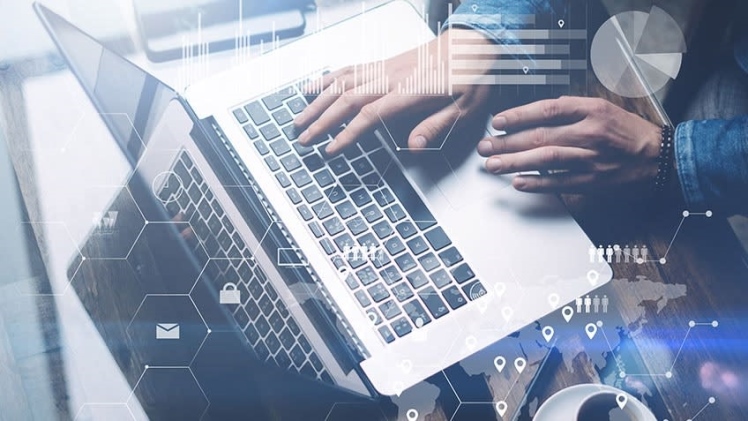The IT sector is continually evolving, and this is even more relevant in the field of cybersecurity. It is also impossible to foresee how things could look in just a few months, let alone a few years. However, there are certain aspects we can foresee from developments in the market, such as switching to the cloud and using mobile devices.
Many of the techniques used are only able to detect threat signals. As they do, the tools are attempting to recognize the trend used in previous incidents. Yet these methods or techniques are insufficient to detect emerging threats.
What Cyber Protection Appear in the Coming Years?
But, one would imagine, not all information is similarly vulnerable from the point of view of secrecy, which is completely right, but should be sensitive from the point of view of correctness; we want to be able to rely on information that is not changed. It may also be sensitive from the point of view of traceability; we also want to be able to rely on information coming from the stated source.
How will cybersecurity risks continue to develop?
When new technology enters the industry, hackers are very dynamic and will still follow the direction of least resistance. When they don’t have to do anything very complicated, they’re not going to do it. They’re almost always hunting for the mistake that one company makes in its cybersecurity.
When more and more IT Companies hit the market, they will look to incorporate strategies that have already performed on new IT products. In the cloud, they’re going to check for breaches much as they used to on handheld computers. Data misuse will prove to be a big concern.
The development and offering of privacy as part of a standard kit has changed the world in the last 5 years. If you look at cloud vendors, such as Microsoft or Google, they’ve baked a lot of encryption at a high level that’s usually only available from third-party solutions. That means there’s going to be a lot of stuff that can be standardized.
Another aspect of emerging technologies that would have an impact on the defense environment is the application of artificial intelligence and machine learning. The potential of these tools to derive valuable knowledge from vast quantities of data has a significant influence on business and science.
Over the next ten years, a system of government organizations will begin to build hacking skills for security and crime; financially motivated criminal groups will continue to explore ways to monetize cyber-attacks; hacker groups will continue to use cyber-attacks to transmit their messages; militant groups will also move to cyberspace.
And eventually – individuals with no clear intent, who want to show their technological abilities, can continue to contribute to the attacker’s ecosystem.
QUANTUM-TECHNOLOGY
One of our most important technological resources for the security of knowledge is encryption. Using cryptography, knowledge can be hidden, loyalty can be created and personal identification can be checked.
The problem that many are exploring is how cryptography can be applied to an environment where we have many wired devices that do not have all that much processing space, memory, and electrical power. This is a big obstacle, but many have taken it on board and the technologies will be built shortly.
An important trend that needs to be addressed as we look to the future for 10 to 20 years is how quantum science can impact the data encryption that we use. There are two distinct types of encryption, symmetrical and asymmetrical. Symmetric encryption would be compromised by quantum computers, but it can also be used for longer encryption keys.
After all, the techniques commonly used for asymmetric encryption will weaken all their protection and it is on these asymmetric encryption algorithms that much of today’s e-commerce, e-identity, and qualification technology is based. Here, it is important to monitor advances so that these algorithms can be replaced before computer programs become a possibility.
How necessary is AI / Machine learning for the coming years of cybersecurity?
Cybersecurity Innovation estimates that there will be 3.5 million empty cybersecurity jobs by 2021, up from 1 million in 2014. As the labor shortage in our sector worsens, AI and machine learning have made a great commitment to eradicate certain jobs and improve efficiency by orders of magnitude for others.
Machine learning has been a crucial tool for cyber defense. Computer science avoids cyber-attacks and improves defense networks through pattern recognition, real-time cybercrime visualization, and rigorous penetration testing.
But the issue is that the world is currently facing a lack of data security professionals who know how to successfully test, deploy and make the most of these innovative technologies. Ai technologies are primarily the face of cyber-security innovations.
So, there’s going to be a major learning curve for companies who apply themselves to cybersecurity. There’s been a myriad of ground-breaking computer protection technologies introduced to the market during the last decade and they haven’t reduced the workforce shortage—which remains our greatest issue.
Attacks intended to change or delete any or portions of the structures. The final points are typical elements in serious situations such as cyber wars and warfare, but they are also tools used by whistleblowers and hackers who are bored.
Threats are growing on all these fronts, but the same applies to awareness-raising and technological assistance.
AI is expected to replace cybersecurity individuals by 2030, according to the Trend Micro survey. In 2021 Trend Micro expects that cyber attackers will look at private networks as a crucial launch pad for breaching corporate IT and IoT networks.
Hence this was all about various future aspects of Cybersecurity enroll for this course free. Hope like the above content and you got sufficient knowledge about it.

